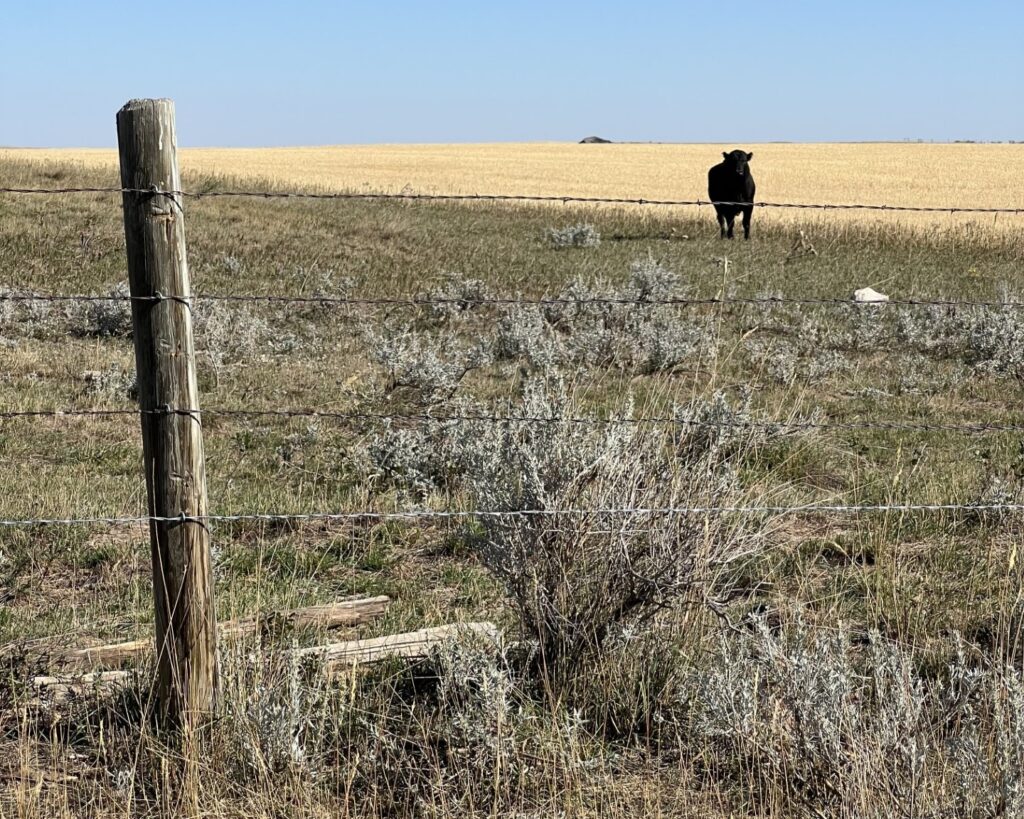AB Direct - Steers
Rail: 492.00-493.50 FOB feedlot (last week)
AB Direct - Heifers
Rail: 492.00-493.50 FOB feedlot (last week)
US Trade- Steers
Rail: 355.00-363.00 (IA, NE) last week
US Trade - Heifers
Rail: 355.00-363.00 (IA, NE) last week
Canadian Dollar
0.19

Volunteers raise the wire for pronghorn-friendly fencelines
Since 2009, Alberta Wildlife Federation (AWF), formerly Alberta Fish and Game Association, and Alberta Conservation Association (ACA) have partnered with conservation minded landowners and volunteers to modify fences with the goal of helping pronghorn. To date over 600 km of fence line has been retrofitted pronghorn-friendly standards through out the pronghorn range in Alberta.
Pronghorn are an iconic grassland ungulate found through out North America. Although they resemble, and are often referred to as antelope, pronghorn have no relation to the antelope of Africa and Eurasia. They are the only remaining members of the family Antilocapra and are known for their speed and unique characteristics that distinguish them from other ungulate species.

Much like the plains bison, pronghorn experienced prolific overhunting in the 19th and 20th centuries which resulted in sharp population declines and near extinction. However, with the successful implementation of conservation efforts, populations in many jurisdictions have since recovered.
Habitat loss and fragmentation encapsulates most of the modern conservation challenges faced by wild species today. For pronghorn, habitat fragmentation interferes with the migrations they undertake to meet their seasonal and environmental needs. Limitations to these movements subject pronghorn to population declines through a cascade of factors that ultimately impact overall survival and reproductive success.
Fences are a prominent feature on the landscape that can contribute to habitat fragmentation. Although they are able, pronghorn are reluctant to jump, and typically cross fences by crawling under the bottom wire.
Barbed-wire fences in particular pose a significant threat to pronghorn health. Individuals often lose hair and obtain lacerations along their back when crawling under the bottom wire. These open wounds are susceptible to infection, impair movement, and may inhibit thermoregulation in the critical winter months.

It was these lacerations that motivated wildlife researchers to find a practical solution where fences remain as functional infrastructure, but also allow for safe passage by pronghorn. Paul Jones, a Senior Biologist with ACA, spearheaded an initiative which explored proposed strategies to mitigate the impacts of barbed-wire fences on pronghorn.
Through the various fence modifications tested it became clear that the simplest concept was in fact the most effective – raise the bottom wire and remove the barbs. Although simple in theory, anyone who has experience with fencing knows that replacing large stretches of fence (even just one wire) is labour-intensive and expensive.
With this in mind, AWF and ACA developed a volunteer-driven program to assist with modifying fences through pronghorn fencing events held three times throughout the summer. AWF originally enlisted the help of dedicated volunteers from their Fish and Game clubs, but as the program gained momentum conservation minded volunteers from all walks of life have participated in the fencing events over the years.

In short, fences are modified to standard 4-strand barbed-wire fence where the bottom wire is replaced with a double-stranded smooth wire and raised 45 cm (18″) from the ground. The remaining wires are then re-spaced with the top wire sitting at 102-107 cm (40-42″), or at a height the landowner is comfortable with. The cost of materials are covered through grants secured by AWF and ACA.
By working closely with landowners, volunteers, and other stakeholder groups, this grassroots conservation effort has had tremendous support within the rural communities where projects were completed and we are looking to expand into new areas within the pronghorn region.
If you have pronghorn on your property and are interested in this program, please reach out — 403-894-9651 or amanda.macdonald@ab-conservation.com


